Facts about Krill
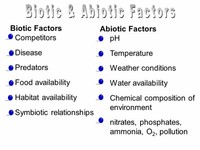
Other factors besides predators and food availability also can influence the mortality rate in krill populations.

The name krill also may be used in a limited sense to refer to the genus Euphausia or even just the species Euphausia superba.
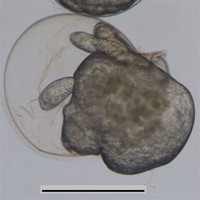
When krill hatch from the eggs, they go through several larval stages called the nauplius, pseudometanauplius, metanauplius, calyptopsis, and furcilia stages, each of which is sub-divided into several sub-stages.

Commercial fishing of krill is done in the Southern Ocean and in the waters around Japan.

Most krill is used for aquaculture and aquarium feeds, as bait in sport fishing, or in the pharmaceutical industry.

The largest krill species is the mesopelagic Thysanopoda spinicauda (Brinton 1953).

Many other animals feed on krill, ranging from smaller animals like fish or penguins to larger ones like seals and even baleen whales.

Dense swarms may elicit a feeding frenzy among predators such as fish or birds, especially near the surface, where escape possibilities for the krill are limited.

Despite the diversity of forms, crustaceans, including krill, are united by the special larval form known as the nauplius.

Disturbances of an ecosystem resulting in a decline of the krill population can have far-reaching effects.
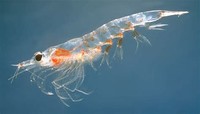
Some species like the Northern krill have a smaller feeding basket and hunt for copepods and larger zooplankton.

One of the divisions of Crustacea is the class (or order) Malacostraca, which includes the krill.

Antarctic krill feed directly on phytoplankton, converting the primary production energy into a form suitable for consumption by larger animals that cannot feed directly on the minuscule algae, but that can feed upon krill.
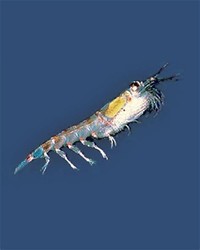
Krill has been harvested as a food source for both humans (okiami) and their domesticated animals since the 19th century, in Japan maybe even earlier.

A peak in krill harvest had been reached in 1983 with more than 528,000 metric tons in the Southern Ocean alone (of which the Soviet Union produced 93 percent).

Krill are crustaceans and as such they have a chitinous exoskeleton made up of three segments: the cephalon (head), thorax, and the abdomen.
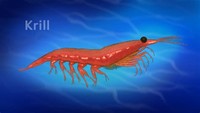
Krill can have multiple broods in one season, with interbrood periods of the order of days.

Some high latitude species of krill can live up to more than six years (e.g., Euphausia superba).
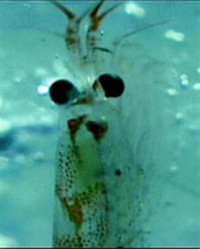
The family Bentheuphausiidae has only one species, Bentheuphausia amblyops, a bathypelagic krill living in deep waters below 1,000 meters.

One such parasite is Oculophryxus bicaulis, which has been found on the krill Stylocheiron affine and S. longicorne.

Crustacea, the taxonomic unit to which krill belong, is generally considered a subphylum of Arthropoda, but sometimes is considered a class or superclass.

Krill normally swim at a pace of a few centimeters per second (0.2 – 10 body lengths per second) (Ignatyev 1999), using their swimmerets for propulsion.

Krill can be easily distinguished from other crustaceans, such as true shrimps, by their externally visible gills.

Their swimming performance has led many researchers to classify adult krill as micro-nektonic lifeforms, i.e., small animals capable of individual motion against (weak) currents.

Krill (singular and plural) or euphausiids are small, shrimp-like marine crustaceans that belong to the order (or suborder) Euphausiacea.

Krill photophores are complex organs with lenses and focusing abilities, and they can be rotated by muscles (Herring and Widder 2001).

The annual catch in Antarctic waters seems to have stabilized around 100,000 tons of krill, which is roughly one fiftieth of the catch quota (CCAMLR 2005).

Krill eyes are intricate; some species can adapt to different lighting conditions through the use of screening pigments (Gaten 2006).
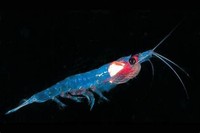
Most krill are swarming animals; the size and density of such swarms vary greatly depending on the species and the region.

Most krill are about 1 to 2 centimeters long as adults, but a few species grow to sizes of the order of 6 to 15 centimeters.

Krill have several pairs of thoracic legs called pereiopods or thoracopods (so named because they are attached to the thorax; their number varies among genera and species).

Well-known species—mainly because they are subject to commercial krill fishery—include Antarctic krill (Euphausia superba), Pacific krill (Euphausia pacifica), and Northern krill (Meganyctiphanes norvegica).

After the final furcilia stage, the krill emerges in a shape similar to an adult, but is still immature.

Historically, the largest krill fishery nations were Japan and the Soviet Union, or, after the latter's dissolution, Russia and Ukraine.

The order Euphausiacea (or suborder, depending on whether Malacostraca is treated as a class or order) comprises the krill.

Many krill are filter feeders: their front-most extremities, the thoracopods, form very fine combs with which they can filter out their food from the water.

Except for the Bentheuphausia amblyops species, krill are bioluminescent animals, having organs called photophore that are able to emit light.

